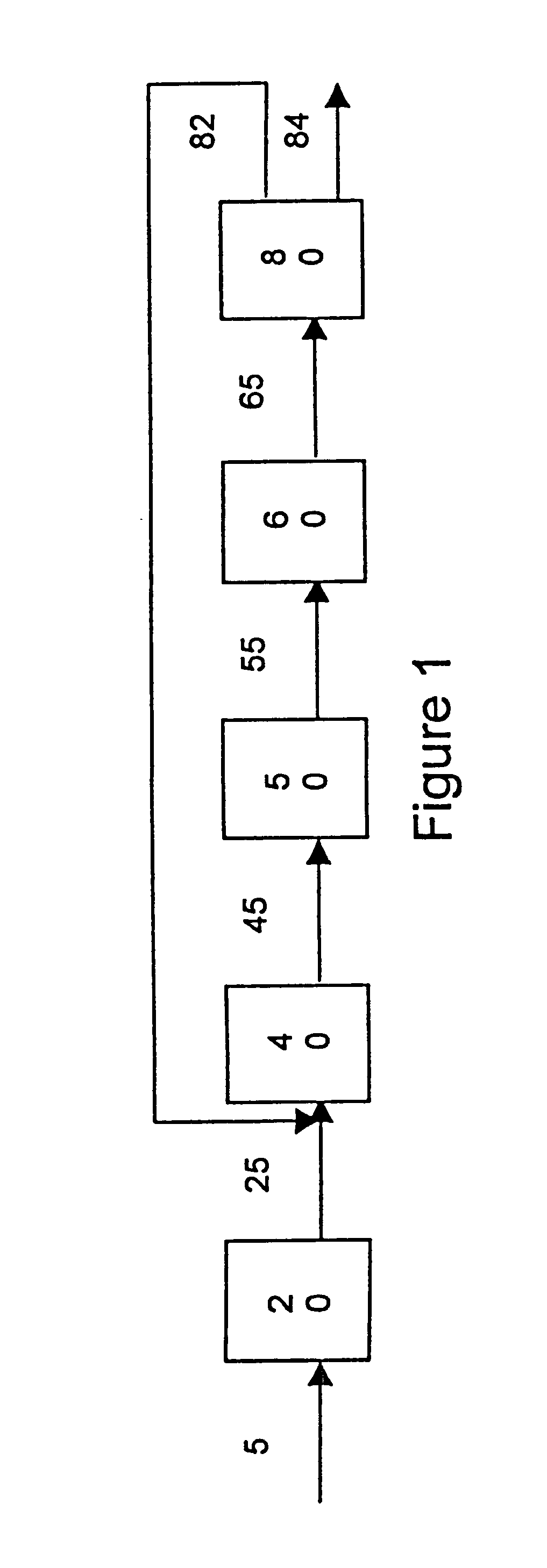Process for making a lube base stock from a lower molecular weight feedstock
a technology of molecular weight feedstock and lubricant base stock, which is applied in the direction of lubricant composition, organic chemistry, naphtha treatment, etc., can solve the problem that the conditions of dehydrogenation can form undesired diolefins
- Summary
- Abstract
- Description
- Claims
- Application Information
AI Technical Summary
Benefits of technology
Problems solved by technology
Method used
Image
Examples
examples
The invention will be further illustrated by following examples, which set forth particularly advantageous method embodiments. While the Examples are provided to illustrate the present invention, they are not intended to limit it.
examples one
through eight show oligomerization of various feeds with various catalysts.
example one
Oligomerization of C.sub.10 and C.sub.15-20 Cuts
C.sub.10 and C.sub.15 -C.sub.20 cuts were obtained from a wax thermal cracker. Both streams contained about 88% n-alphaolefins, with the remainder being mostly paraffins and diolefins. A 3:1 mixture of the C.sub.15 -C.sub.20 / C.sub.10 cuts was prepared, and reacted over a catalyst composed of 1% Zn on ZSM-5 bound with Catapal alumina. Reaction conditions were 300 psig, 450.degree. F., and 0.25 LHSV. At 200 hours onstream, conversion to 700.degree. F+ lube was about 15%. At that point, the catalyst was rejuvenated by stripping with H.sub.2 at 800.degree. F. and the run restarted with recycle of 625.degree. F.- material. Per pass conversion to 700.degree. F.+ was 50-60%. Products were hydrogenated over a Ni--Mo on SiO.sub.2.sup.- Al.sub.2 O.sub.3 catalyst at 550.degree. F., 1000 psig, 1 LHSV, and 3600 SCF / bbl H.sub.2, and then fractionated by distillation into a 700.degree.-800.degree. F. fraction (47 LV% of the 700.degree. F.+, and a 80...
PUM
| Property | Measurement | Unit |
|---|---|---|
| boiling points | aaaaa | aaaaa |
| boiling points | aaaaa | aaaaa |
| boiling points | aaaaa | aaaaa |
Abstract
Description
Claims
Application Information
 Login to View More
Login to View More - R&D
- Intellectual Property
- Life Sciences
- Materials
- Tech Scout
- Unparalleled Data Quality
- Higher Quality Content
- 60% Fewer Hallucinations
Browse by: Latest US Patents, China's latest patents, Technical Efficacy Thesaurus, Application Domain, Technology Topic, Popular Technical Reports.
© 2025 PatSnap. All rights reserved.Legal|Privacy policy|Modern Slavery Act Transparency Statement|Sitemap|About US| Contact US: help@patsnap.com



